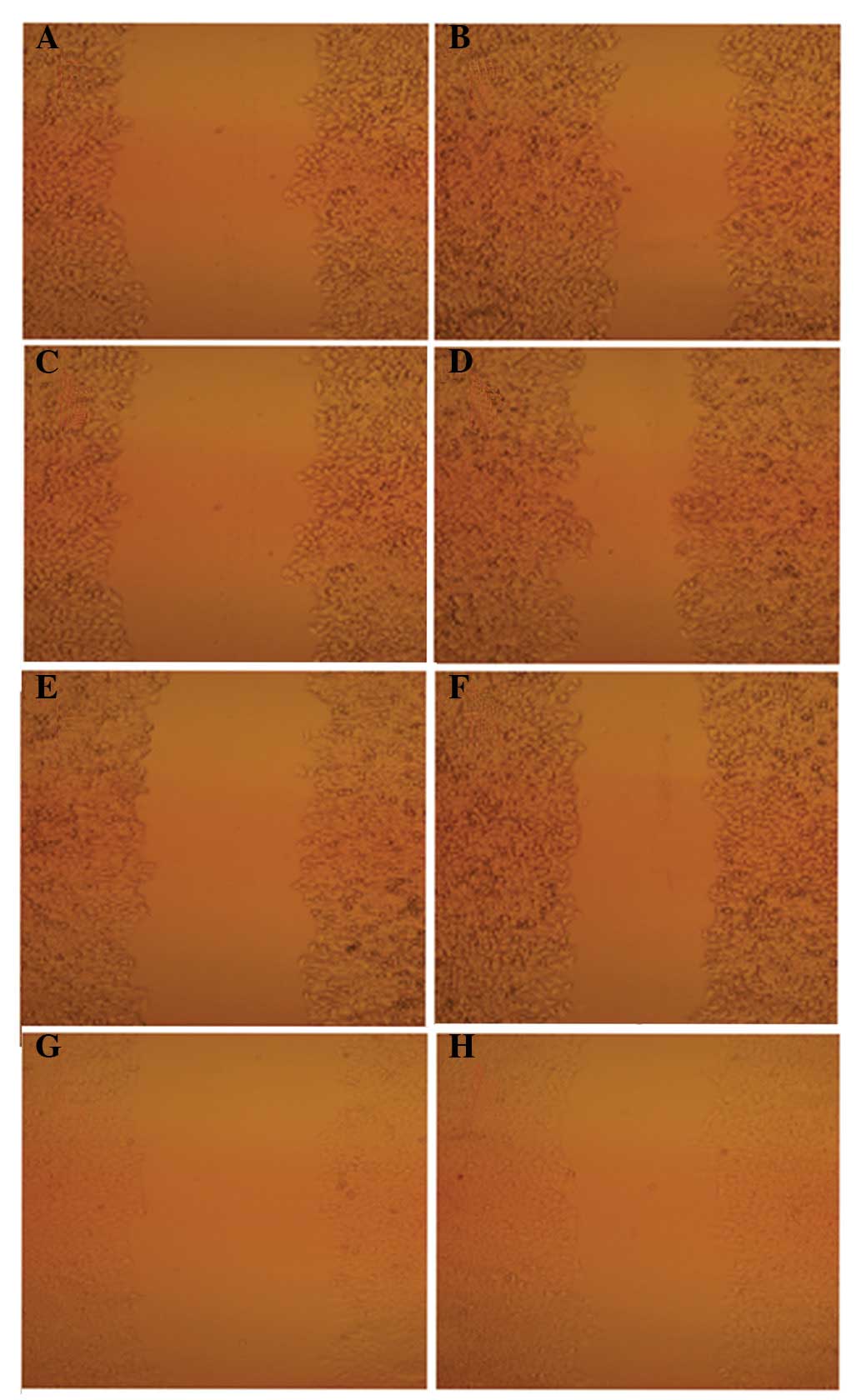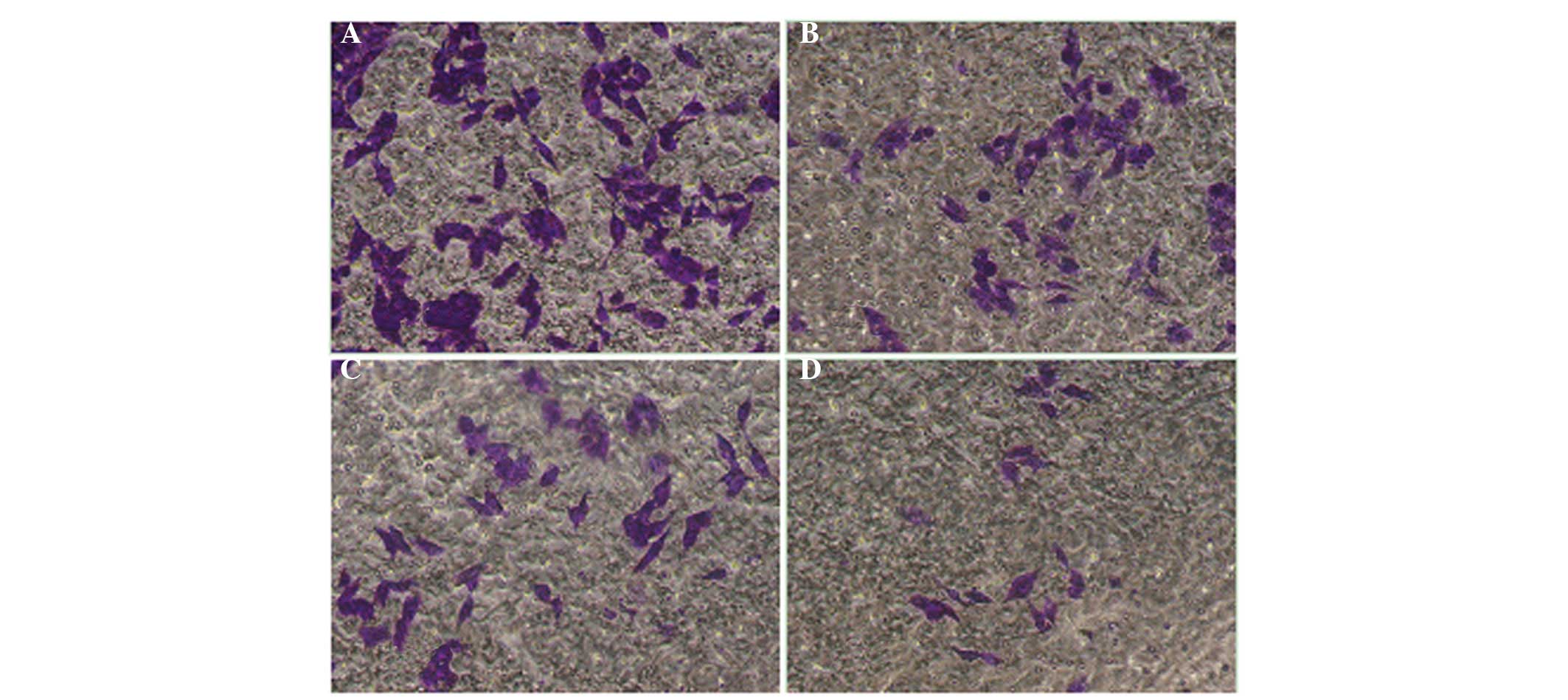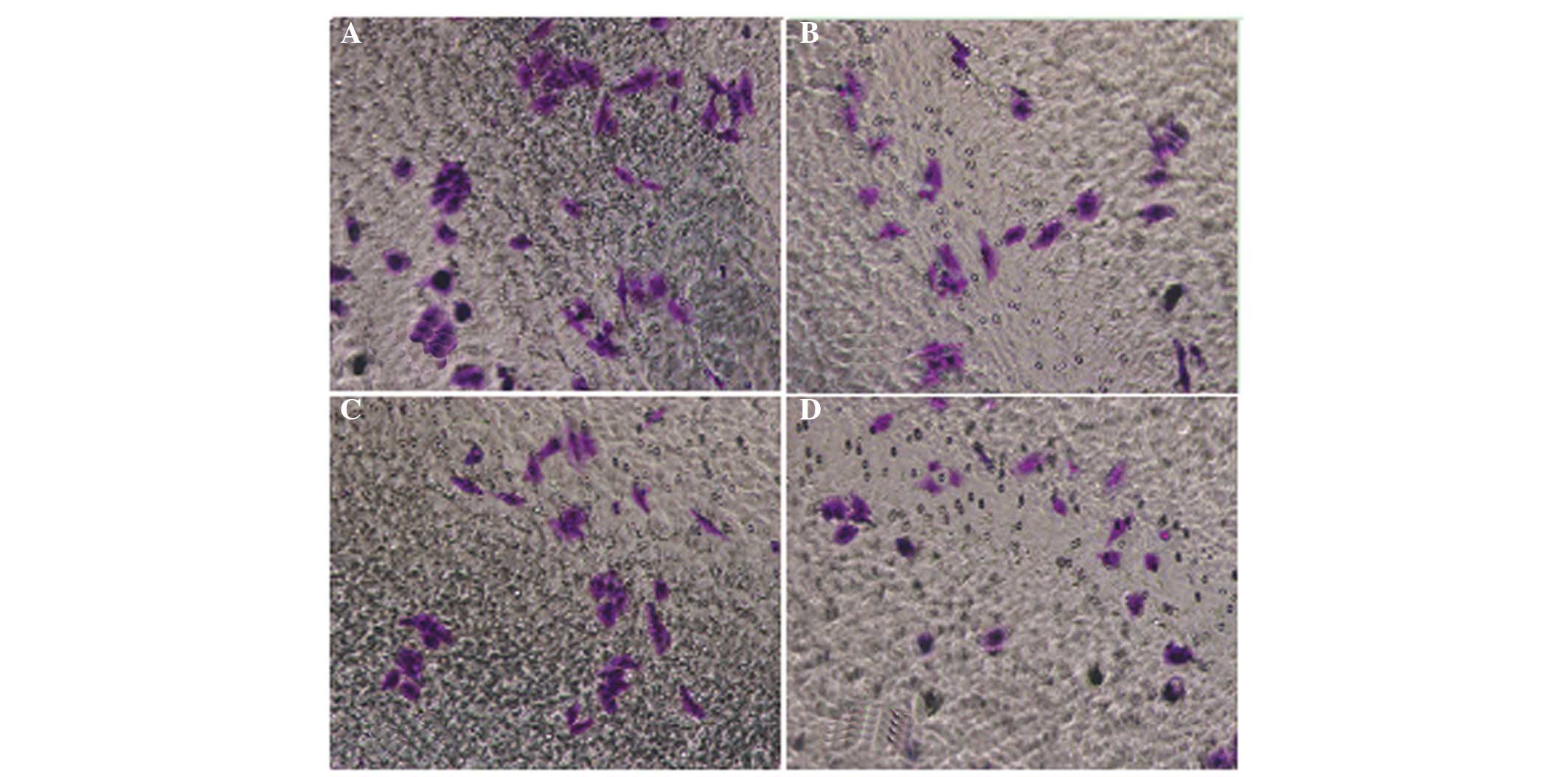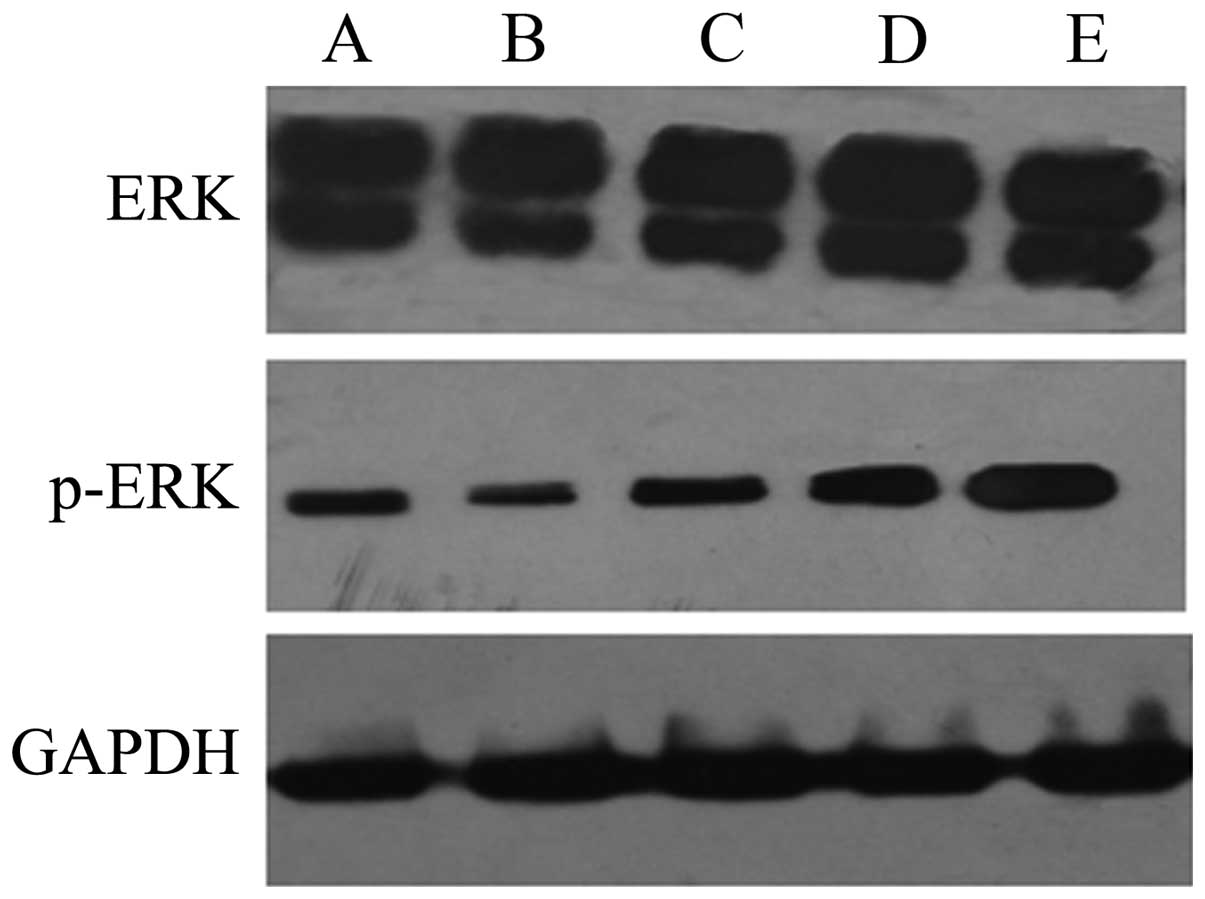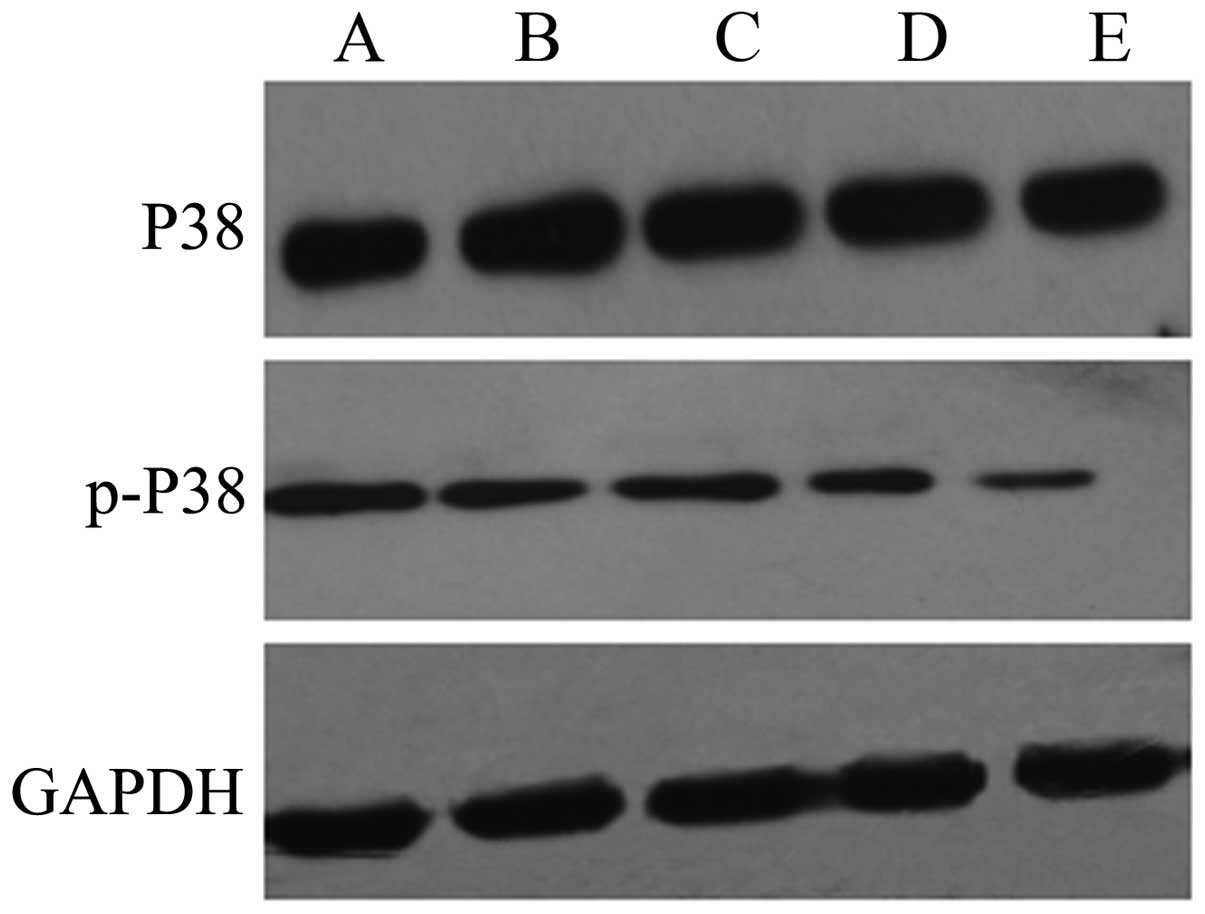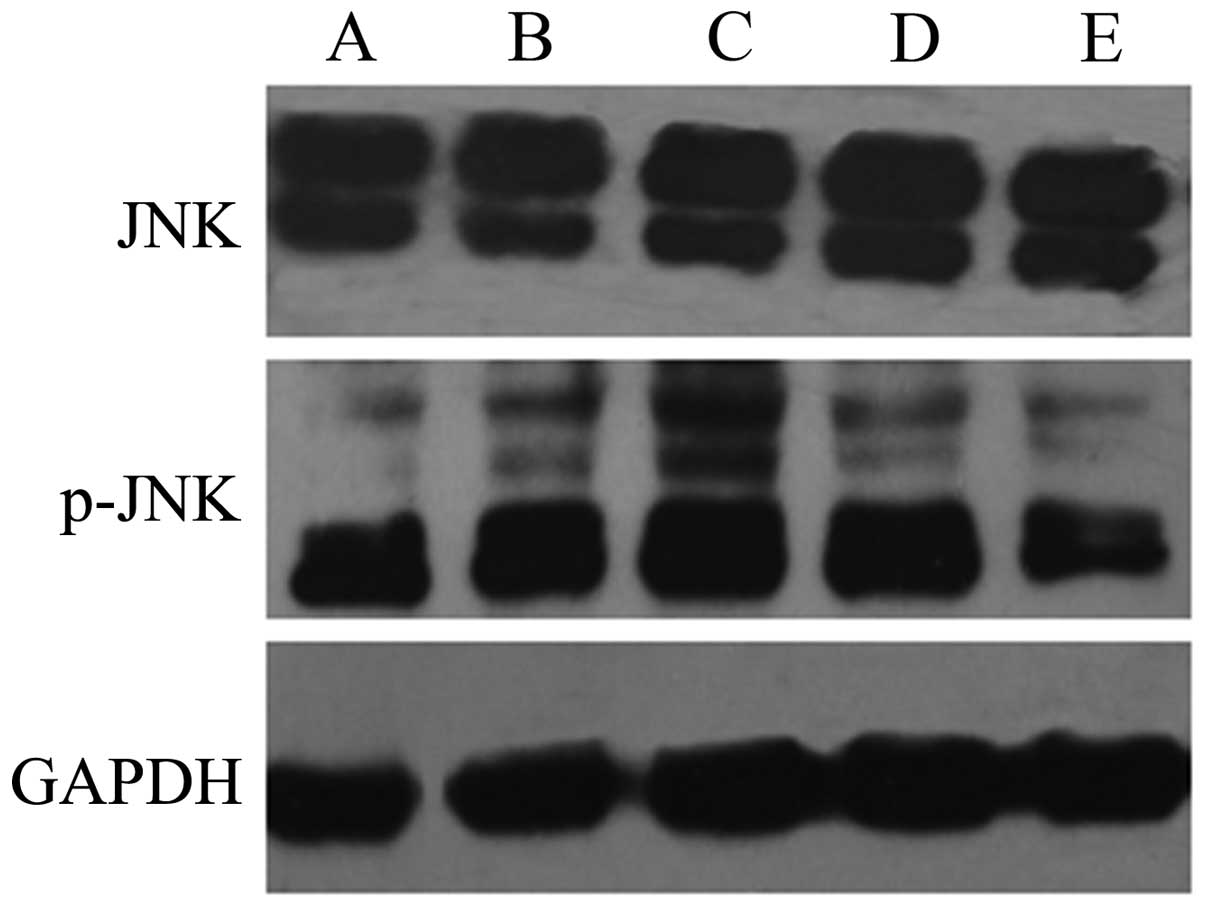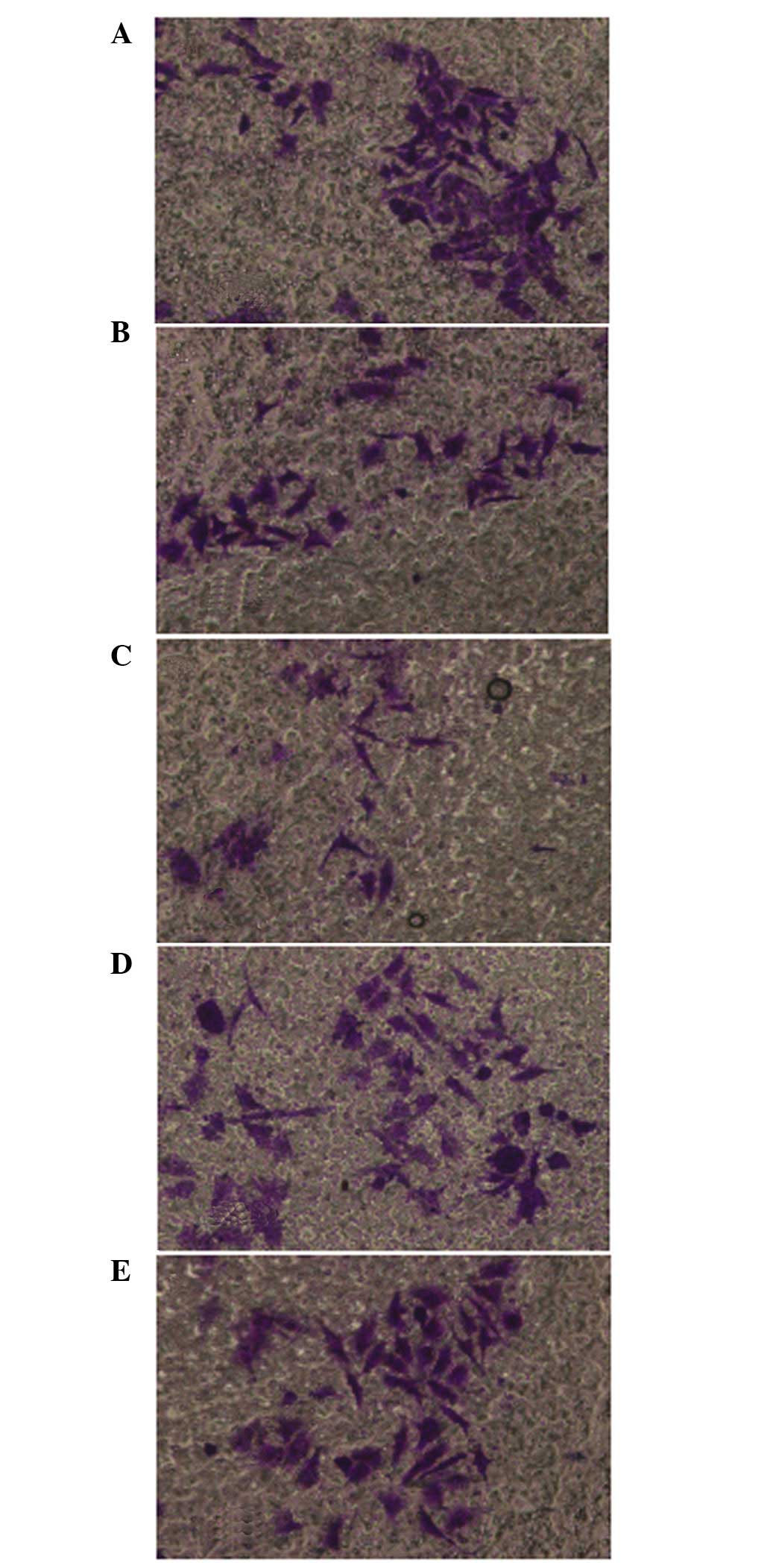Chinese herbal formula QHF inhibits liver cancer cell invasion and migration
- Authors:
- Published online on: April 11, 2016 https://doi.org/10.3892/etm.2016.3247
- Pages: 2413-2419
Metrics:
Total
Views: 0 (Spandidos Publications: | PMC Statistics:
)
Total PDF Downloads: 0 (Spandidos Publications: | PMC Statistics:
)
Abstract
The aim of the present study was to observe the effects of the Chinese herbal formula QHF (Q, Qingrejiedu; H, Huoxuehuayu; and F, Fuzhengguben) on the migration and invasion of hepatocellular carcinoma (HCC) HepG2 cells and to elucidate the potential molecular mechanisms involved. HepG2 cells were treated with various concentrations of QHF, and scratch and Transwell® migration assays were used to qualitatively analyze differences in the migration and invasion activity of these cells. Extracellular signal‑regulated kinase (ERK), p38 and c‑Jun N‑terminal kinase (JNK) inhibitors were subsequently introduced in order to study the association between QHF and the invasion of HepG2 cells. The protein expression levels of the mitogen‑activated protein kinase (MAPK) signaling pathway in HepG2 cells in the presence and absence of QHF were additionally determined using western blot analysis. The results showed that QHF significantly inhibited the proliferation of the HepG2 cells in a concentration‑dependent manner, in addition to inhibiting cell movement, which reduced the ability of the cells to invade and migrate. Western blot analysis indicated that the effects of QHF on HCC HepG2 cells after 24 h were to significantly decrease the expression of phosphorylated‑ (p‑)ERK and to increase the expression of p‑p38 and p‑JNK; however, the total quantity of ERK, p38 and JNK protein remained unchanged. The administration of an inhibitor of ERK altered p38 and JNK expression and promoted the anti‑invasion effects of QHF, whereas p38 and JNK inhibitors only partially reversed this effect. The results of the present study indicate, therefore, that QHF is able to inhibit the migratory and invasive activity of HepG2 cells. A possible underlying mechanism involves the activation of the p38 and JNK MAPK signaling pathway and the attenuation of the ERK signaling pathway.



